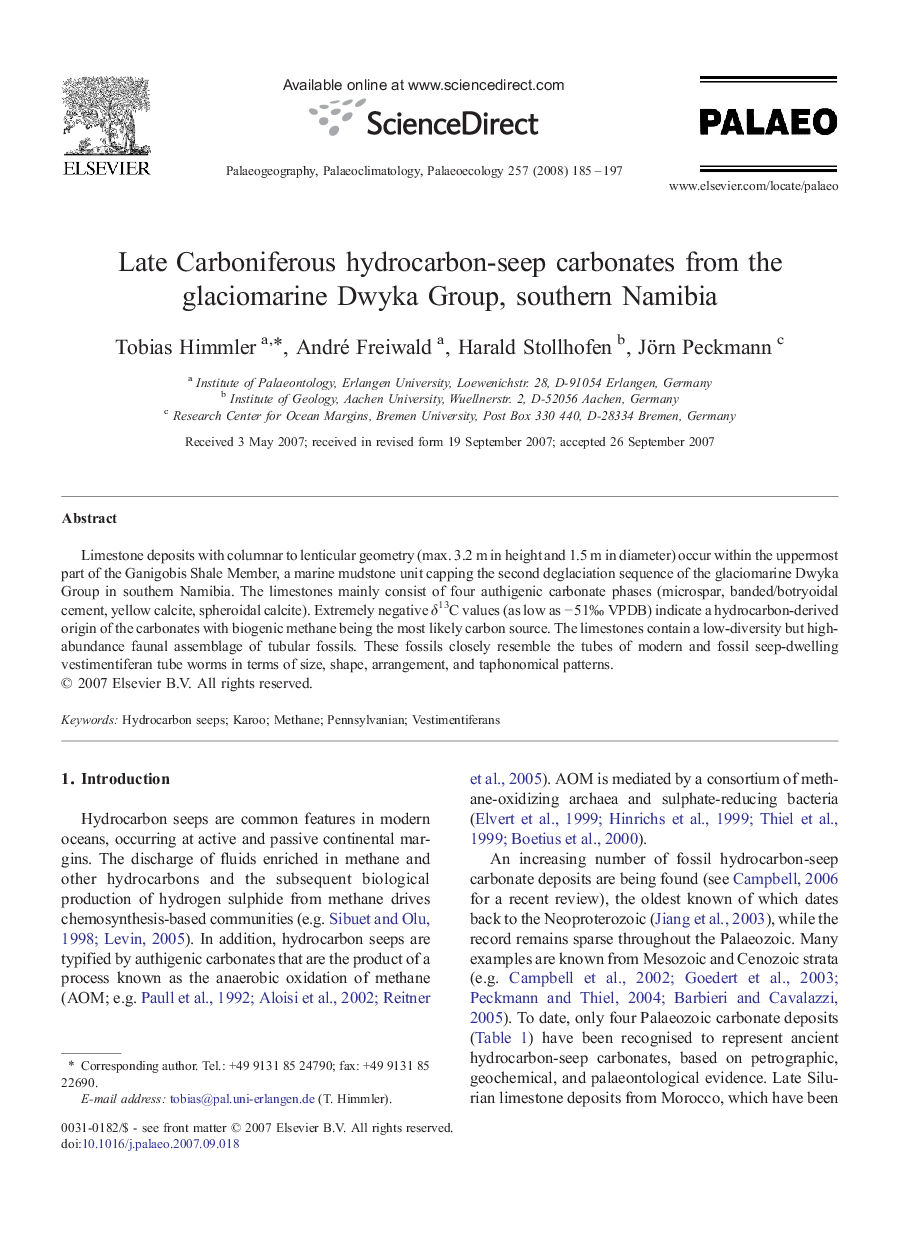| Article ID | Journal | Published Year | Pages | File Type |
|---|---|---|---|---|
| 4468863 | Palaeogeography, Palaeoclimatology, Palaeoecology | 2008 | 13 Pages |
Limestone deposits with columnar to lenticular geometry (max. 3.2 m in height and 1.5 m in diameter) occur within the uppermost part of the Ganigobis Shale Member, a marine mudstone unit capping the second deglaciation sequence of the glaciomarine Dwyka Group in southern Namibia. The limestones mainly consist of four authigenic carbonate phases (microspar, banded/botryoidal cement, yellow calcite, spheroidal calcite). Extremely negative δ13C values (as low as − 51‰ VPDB) indicate a hydrocarbon-derived origin of the carbonates with biogenic methane being the most likely carbon source. The limestones contain a low-diversity but high-abundance faunal assemblage of tubular fossils. These fossils closely resemble the tubes of modern and fossil seep-dwelling vestimentiferan tube worms in terms of size, shape, arrangement, and taphonomical patterns.
